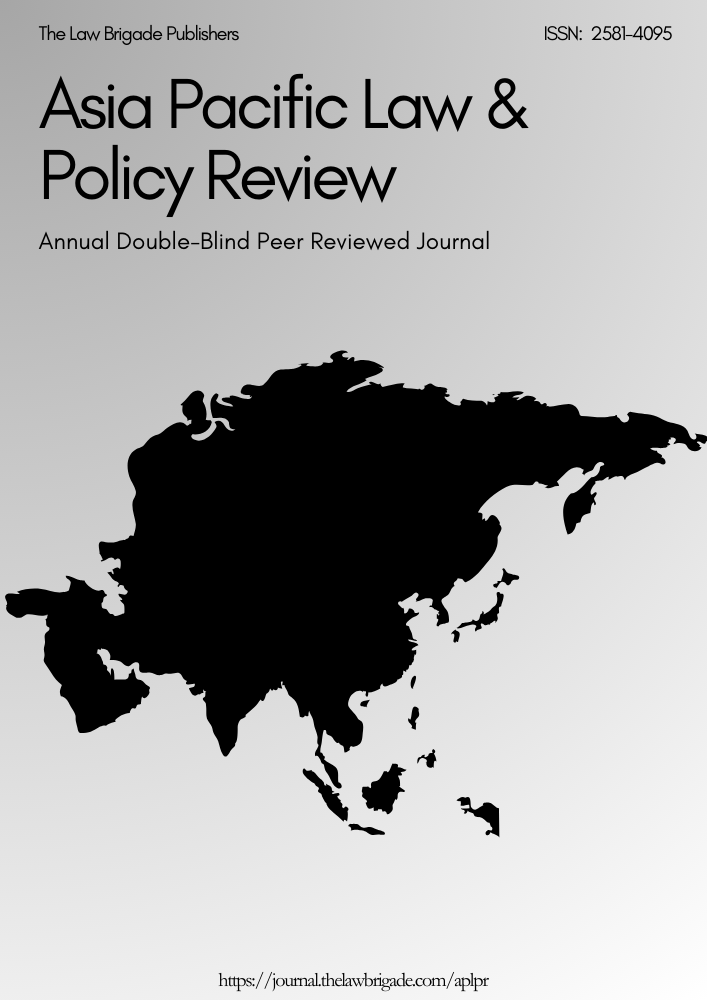COMPELLING THE PRESENCE OF AN ACCUSED: HOW TO FIND A NEEDLE IN A HAYSTACK
Keywords:
summons, systemic, CrPCAbstract
The presence of the accused during his trial is of vital importance to ensure that all fairness is ensured to him in his prosecution and a significant portion of the existing discourse in criminology addresses the rights of the accused in such proceedings. This paper however seeks to address an area that needs much focus, especially in the wake of recent developments – the systemic redressal mechanism when an accused deliberately conceals his presence. The phrase ‘systemic’ is deliberate: a large reason for the delay in disposal of criminal cases in India is the time expended in compelling the presence of an accused. This piece aims to analyze the manner in which chapter VI of the Code of Criminal Procedure, 1973 is implemented in courts in India today and subsequently, suggest possible changes to make them more efficient. On the one hand, this article elaborates upon the specific issues / laches in each of the four parts in the Chapter. On the other and more significant hand, the article focuses on the possible benefits that the future evolution of this Chapter of the Code could derive by relying upon modern and revolutionary technologies such as the Unique Identification Authority of India Program (UIAI) and the E-courts services. With the aid of some cross-jurisdictional studies, the article concludes that these technological breakthroughs hold the key to reduction of the number of cases pending before courts in India and improve systemic quality, overall.
Downloads
Downloads
Published
Issue
Section
License

This work is licensed under a Creative Commons Attribution-NonCommercial-ShareAlike 4.0 International License.
License Terms
Ownership and Licensing:
Authors of research papers submitted to any journal published by The Law Brigade Publishers retain the copyright of their work while granting the journal specific rights. Authors maintain ownership of the copyright and grant the journal the right of first publication. Simultaneously, authors agree to license their research papers under the Creative Commons Attribution-ShareAlike 4.0 International (CC BY-SA 4.0) License.
License Permissions:
Under the CC BY-SA 4.0 License, others are permitted to share and adapt the work, even for commercial purposes, provided that appropriate attribution is given to the authors, and acknowledgment is made of the initial publication by The Law Brigade Publishers. This license encourages the broad dissemination and reuse of research papers while ensuring that the original work is properly credited.
Additional Distribution Arrangements:
Authors are free to enter into separate, non-exclusive contractual arrangements for distributing the published version of the work (e.g., posting it to institutional repositories or publishing it in books), provided that the original publication by The Law Brigade Publishers is acknowledged.
Online Posting:
Authors are encouraged to share their work online (e.g., in institutional repositories or on personal websites) both prior to submission and after publication. This practice can facilitate productive exchanges and increase the visibility and citation of the work.
Responsibility and Liability:
Authors are responsible for ensuring that their submitted research papers do not infringe on the copyright, privacy, or other rights of third parties. The Law Brigade Publishers disclaims any liability for any copyright infringement or violation of third-party rights within the submitted research papers.


